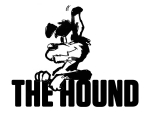The authenticity of manuka honey exported from New Zealand is to be settled once and for all.
The Ministry for Primary Industries (MPI) has released a scientific definition to authenticate NZ mānuka honey, hoping to seal its premium position in overseas markets.
Released last week, the definition arises from proposals for new requirements for the exporting of bee products.
Questions have arisen in overseas markets about the authenticity of some honey being sold as NZ manuka honey. Maintaining the confidence of overseas consumers in the integrity of manuka honey is a key for NZ honey exporters.
“The proposed definition and export requirements are important for the continued growth of our important export honey industry,” says MPI deputy director-general, Bryan Wilson.
Working with contracted experts, MPI has spent three years determining a science-based definition of what makes manuka honey authentic to NZ.
“Our science has been carefully planned and executed and as a result the definition is robust, sophisticated and accurate,” says Wilson.
The chief executive of Apiculture NZ, Karin Kos, is welcoming MPI’s move.
“The introduction of a regulatory science definition is a milestone in the history of the mānuka honey industry. It is a relatively young industry growing very rapidly and with huge potential.
“We signalled our willingness to work with MPI to ensure its proposed science definition is robust in meeting shared objectives for consumer confidence and authenticity, and we will make a detailed submission on behalf of industry.”
Apiculture NZ, anticipating the release of the definition, is forming an expert review team on behalf of the industry; this will examine the proposed MPI science definition. “The group will be supported by science advisors. We are only going to get one shot at this and it is important we get it right.”
MPI is aiming to bring the new requirements into effect in late July 2017.

















